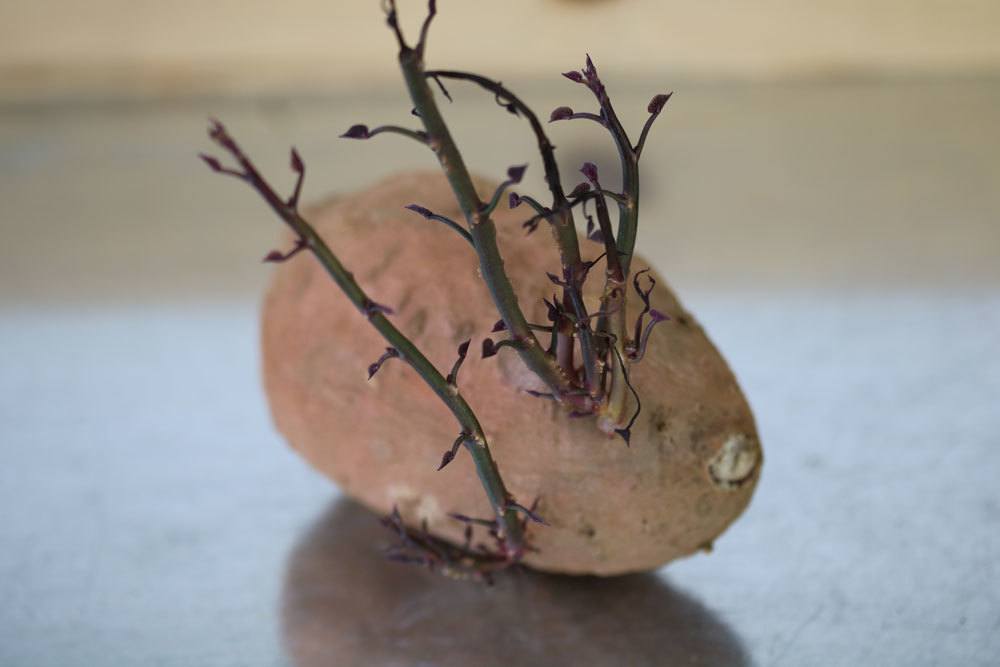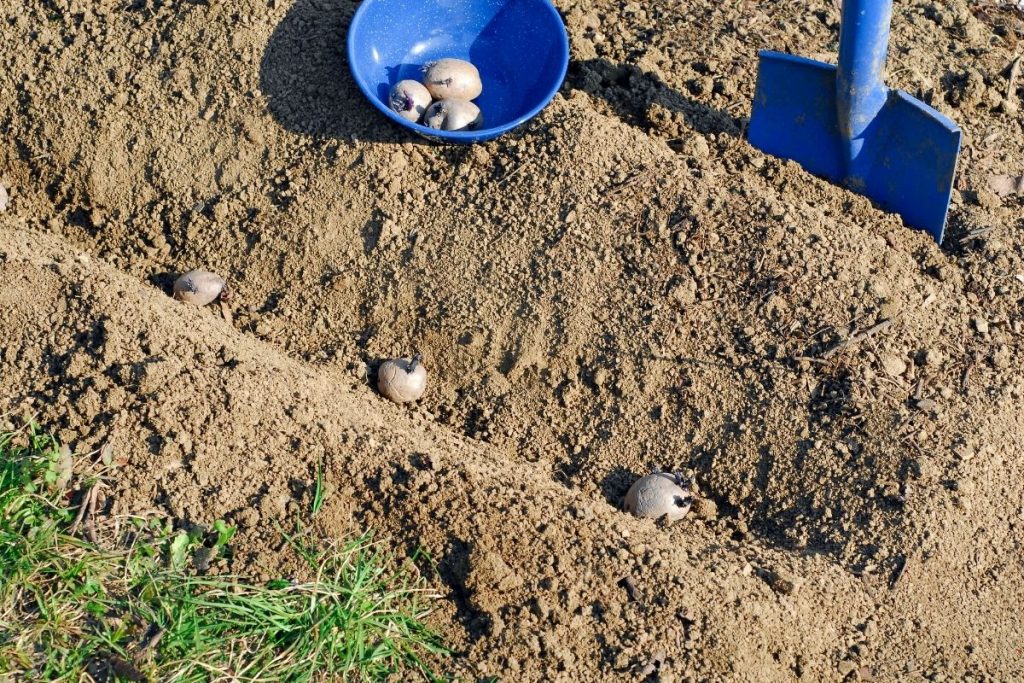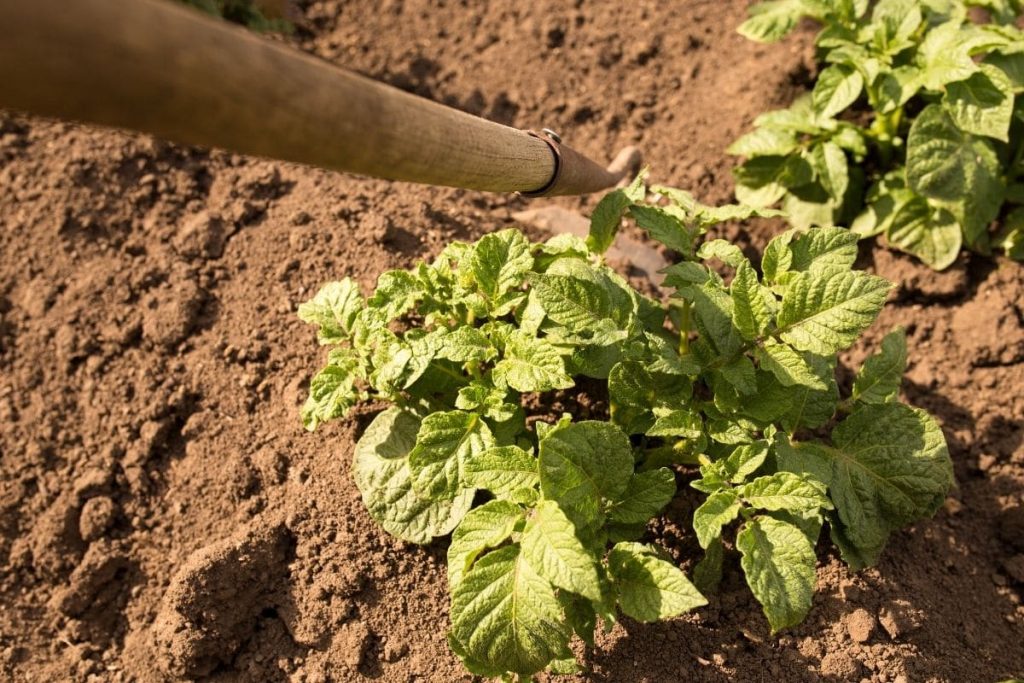The potato is a traditional crop and versatile staple food. However, due to improper storage, they quickly form long sprouts. Eat them now should not, but can you just plant sprouted potatoes?
- Germination can be delayed or accelerated under certain conditions
- already germinated potatoes are edible as long as the sprouts are not longer than one centimeter
- the longer they are, the more toxic substances the tuber contains
- potatoes with sprouts still do not have to be thrown away
- they can be planted both in the bed and in planters
Contents
- 1 Do not throw away, but plant
- 2 Prepare the ground
- 3 Planting sprouted potatoes
- 4 In the bed
- 5 In the tub
- 6 Do not forget to mound
- 7 Frequently asked questions
- 8 How should potatoes be stored to avoid early sprouting?
- 9 Is it possible to plant only parts of a tuber?
- 10 Can you propagate your own potatoes indefinitely?
- 11 Author
Do not throw away, but plant
Potatoes that are already soft, shriveled, covered with long sprouts and may have green spots should not be eaten. They may already contain so much poison (solanine) that health complaints are to be feared after eating them. However, sprouted potatoes can be used very well as seed potatoes for planting next year and can be planted in the garden or tub. This applies both to tubers from the supermarket and from your own harvest.

Tip: If potatoes from the supermarket completely fail to germinate, then they have probably been treated with germination stop. They are not suitable for planting.
Prepare the ground
The tasty tubers thrive best in light to medium soils. Accordingly, sandy soils and sandy loam soils are optimal. These should be well loosened and freed from old root debris and stones. In addition, a cultivation break for potatoes of at least four years should be observed to avoid the spread of soil-borne diseases. Good precrops, on the other hand, are lettuce, kohlrabi, bush beans and endive.
Potatoes require a lot of nutrients, but are sensitive to overfertilized soils. It is best to mix mature compost or well-rotted manure into the soil, ideally already in the fall of the previous year. In this way, the tubers are well supplied with magnesium, nitrogen, calcium, phosphorus and potassium. Green manuring in the spring or fall of the previous year also has a similar effect. On rather poor soils, yields are significantly lower. Once the soil is optimally prepared, planting can begin.
Planting sprouted potatoes
In the bed
For planting, the sprouts should be at least three centimeters long. The time of planting depends on the variety. As a rule, the first can be planted from April. The soil temperature for germinated tubers should be at least seven degrees.

- first draw furrows about 15 cm deep
- Place the tubers with the sprouts facing upwards
- space early maturing potatoes about 30 cm apart
- for medium and late maturing up to 60 cm
- if there are several rows, keep a spacing of 30-40 cm
- spacing too short, mainly smaller tubers
- there must be enough soil for piling up
- finally close the furrows with a rake
- duration of cultivation from planting to harvesting about four to five months
Note: Potatoes are sensitive to frost. So if frost threatens again, it is best to cover the young shoots with a fleece or straw.
In the tub
- Planting pot should have a capacity of 20-30 liters
- sufficient drainage holes to avoid waterlogging
- in the tub a 15-20 cm thick layer of potted plant soil
- alternatively, use topsoil mixed with compost
- place germinated potatoes on the soil
- again with the sprouts upwards
- make sure there is enough space between the tubers
- in a 10 liter pot put three to four tubers
- finally, cover the potatoes with soil and water them
Tip: Special plant pots for potatoes are offered in stores, from which you can easily remove the ripe tubers in portions.
Do not forget to mound
Mounding is an important step in potato cultivation. On the one hand, it should support tuber formation and, on the other hand, ensure that the tubers are not exposed and exposed to light. If this happens, the tubers turn green, i.e. they form toxic solanine, which makes them inedible.

- pile on as soon as the herb is 10-15 cm high
- no matter whether in a bed or a tub
- while doing this, pull the soil to the plant with a hoe
- fill the stems up to the half with soil
- repeat every two to three weeks
- harvesting is done when the entire herb is wilted
So-called adventitious roots form on the part of the plant covered with soil, on which further potato tubers develop.
Tip: You can also purposefully make potatoes germinate by laying them out next to each other in boxes from March onwards and placing them in a bright place at a temperature of about 15 degrees. With enough light, they will soon develop thick and firm sprouts.
Frequently asked questions
How should potatoes be stored to avoid early sprouting?
First, they should be left in the ground as long as possible. This gives the tubers a firmer skin, which protects them better from rotting. When storing them, make sure that they are neither too hot nor too cold. It is best to put them in fruit pots and place them in a dark and dry place at temperatures of 5-15 degrees. Damaged and diseased tubers are not suitable for prolonged storage.
Is it possible to plant only parts of a tuber?
This is definitely possible, for example, if only a few seed potatoes are available. Then you can cut some in half with a sharp knife and plant the halves. Provided that each of these halves has eyes and sprouts.
Can you propagate your own potatoes indefinitely?
After three years at the latest, you should look for new planting material. If you keep propagating your own potatoes, there is a risk that diseases will spread through the tubers. In addition, the yield will soon drop significantly. Not to mention a three- to four-year break in cultivation.









